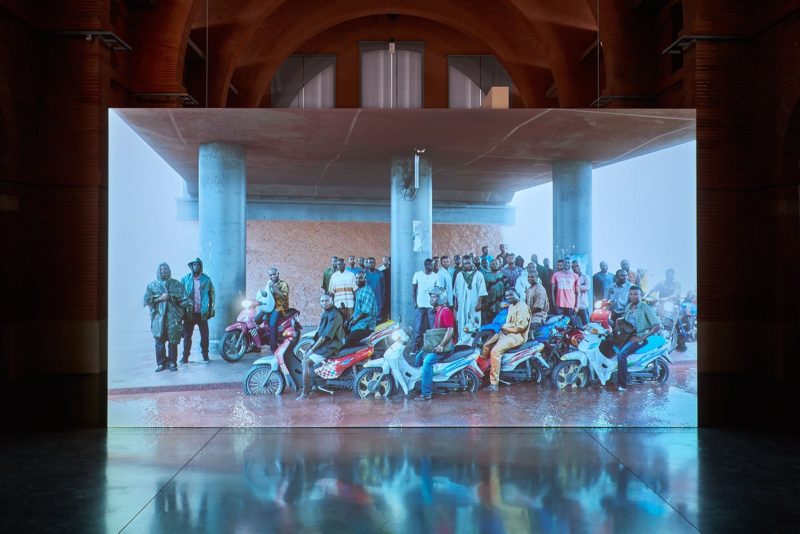
David Claerbout
Dark Optics
The exhibition is firmly rooted in a broader history of photography, film, and video. Devised in two parts, it analyses the transition from the analogue image on film to dematerialised digital creation.
For the past twenty years, David Claerbout, born in 1969 in Courtrai and living in Antwerp (Belgium), has developed an original corpus combining film, painting, and photography. His first films, in 1997, were developed in the midst of the image revolution: the transition from analogue to digital. His work, present in the biggest museum and international collections, has since explored the intersections between still and moving images. To do this, he modifies traditional film forms, notably their duration, narration, and staging. Today, on the ground floor of Les Abattoirs, the artist juxtaposes a dozen monumental artworks created between 1997 and 2017. This exhibition, Dark Optics, questions as much the reality of the landscape around us – modern urban architecture or elements from the natural world (trees, water, wind, etc.) – as it does the reality of the images before us.
In the era of digital transformation and the rapid overconsumption of images, David Claerbout’s creations are suspended tableaux that invite contemplation and free exploration. Playing on effects of compression, stretching, and slow motion, he sculpts the fabric of time. Calling on our memory, he elicits a sense of both familiarity and strangeness by appropriating archive photographs and historic films (some of which are famous), reworking the expected storylines and the images, pixel by pixel.
The calm north wing of les Abattoirs presents, in black and white, the early days of photography and cinema in the 19th century, while the south aisle shows the development of colour and sound, followed by the digital age. While the current image-production process increasingly takes place on computers rather than through the camera’s lens, the artist reveals the emergence of a new optical form, suited to the multimedia experience, which he calls “dark optics”. For him, we could very easily “turn out the lights and contemplate darkness all day long”. Far from considering that real objects only exist within a virtual world once they have passed to the other side of the screen, he highlights this new materiality of the image, with the goal, he says, of “finding confirmation that we are still alive and perceiving a coherent world”.
After Suspended Animation - À corps perdu dans l’espace numérique and Renaud Jerez - Miroir noir, with this exhibition, les Abattoirs is continuing its exploration of the transformations of images in the contemporary world.
Exhibition in association with Le Printemps de Septembre.
